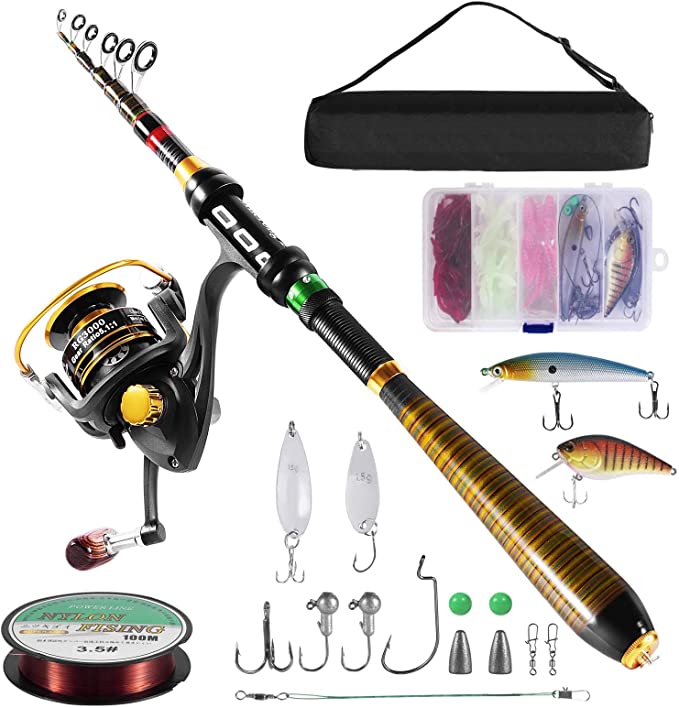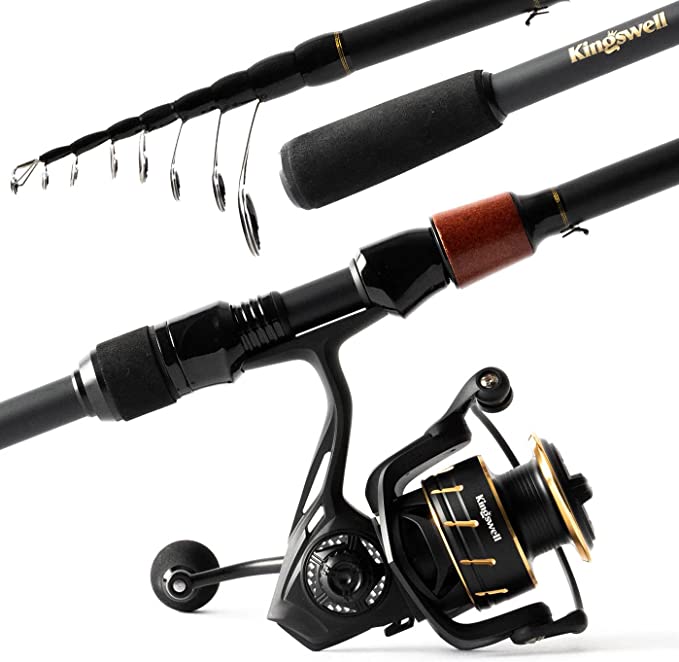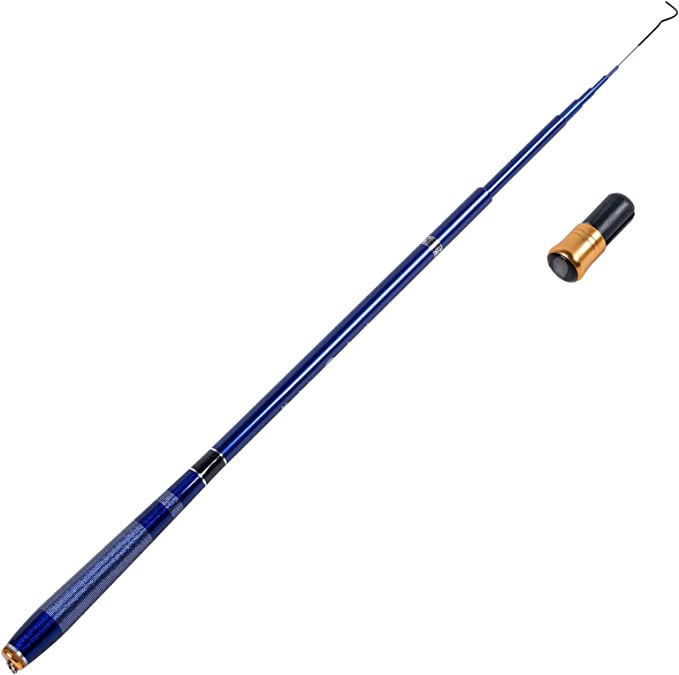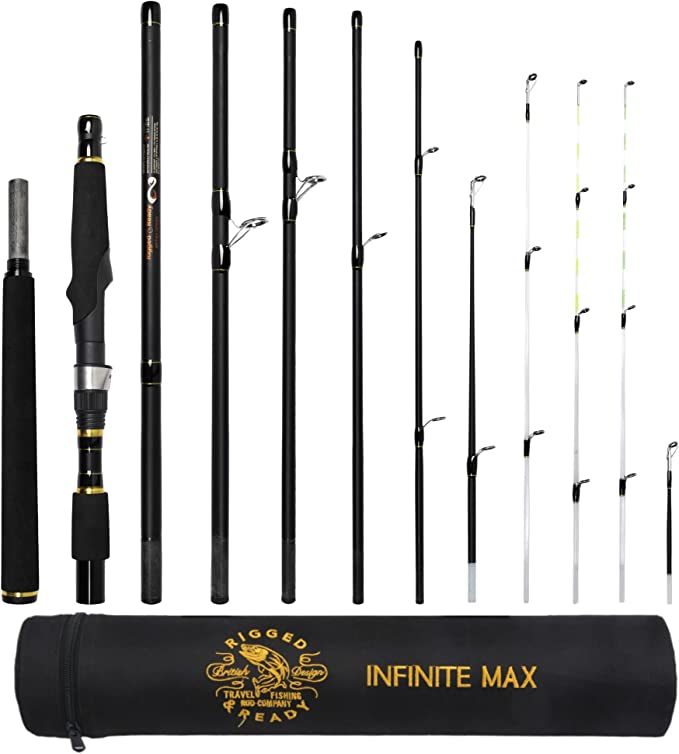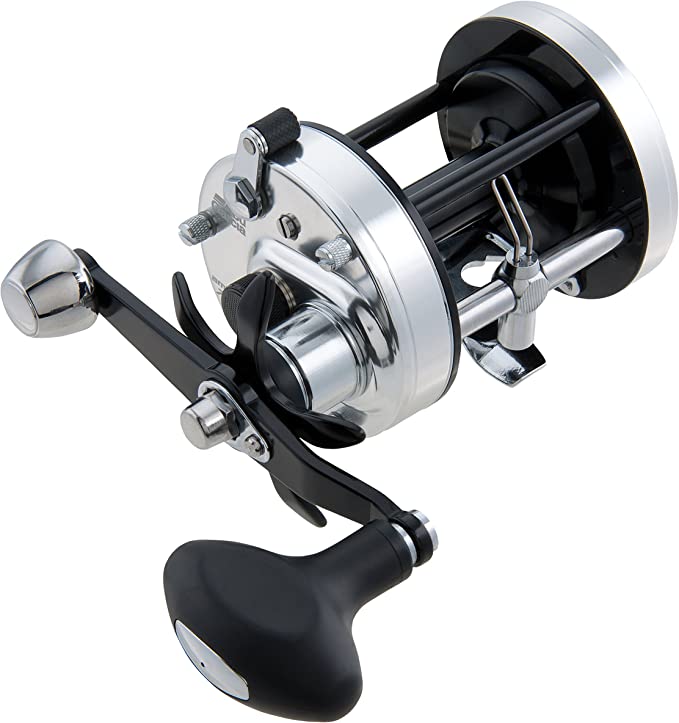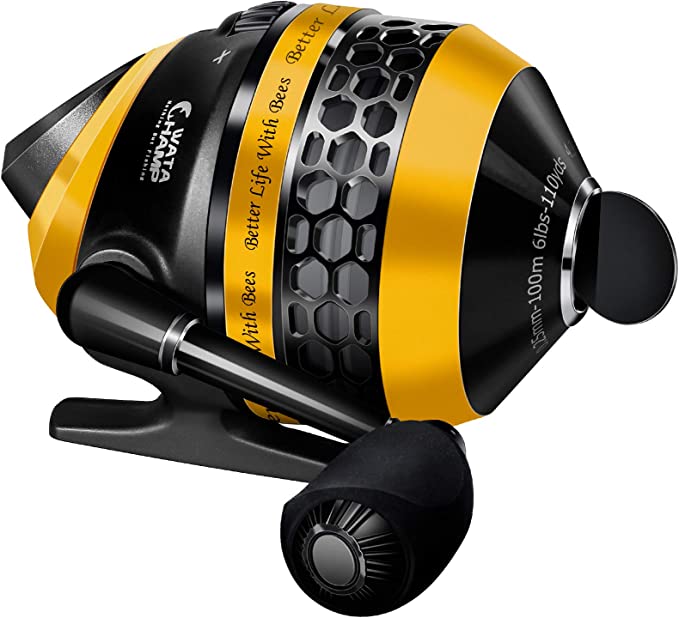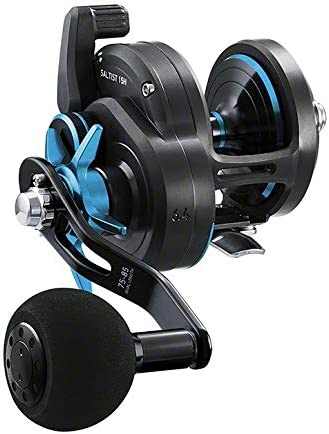PLUSINNO Telescopic Fishing Rod: Enhancing Your Fishing Experience with Modern Convenience
Update on Aug. 1, 2025, 5:26 a.m.
Imagine standing at the edge of an alpine lake, the air thin and crisp, the water a startling shade of sapphire. You’ve hiked for miles to reach this pristine solitude, but the thought of fishing is tainted by the memory of a clumsy, full-length rod snagging on every low-hanging branch. This is the modern angler’s dilemma: the clash between the call of the wild and the burden of our gear. The solution, however, is not a compromise but a marvel of elegant engineering—the telescopic fishing rod. To dismiss it as merely a “convenient” gadget is to miss the story. It is a testament to how principles of mechanical engineering, material science, and even aerospace technology have converged to create a tool that doesn’t just fit in a backpack, but unfolds a world of possibility.

An Inheritance of Ingenuity: The Mechanics of Collapse
The magic of a telescopic rod lies in its profound transformation. A tool that stands taller than a person can, in seconds, shrink to the length of a forearm. This is possible through an engineering principle that echoes centuries of innovation, from the mariner’s spyglass to the photographer’s tripod. The rod is constructed from a series of hollow, tapered blanks, each nested concentrically inside the next, like a set of Russian dolls.
This is known as a friction-lock or telescopic mechanism. As you extend the rod, each section slides out and seats firmly against the next, the slight taper creating immense friction that locks it into a single, rigid form. The physics are simple, yet the result is profound. It allows the rod to maintain the functional length required for the leverage of casting while solving the fundamental problem of portability. It is design in its purest form: function dictating form to overcome a universal constraint.

The Soul of the Rod: A Tale of Two Fibers
While the design provides the form, the material gives the rod its soul. The heart of a modern travel rod like the PLUSINNO is not a single substance, but a composite—a strategic blend of carbon fiber and fiberglass. This is not a cost-saving measure; it is a sophisticated engineering choice to create a whole that is greater than the sum of its parts.
The star of this partnership is carbon fiber. Born in the high-stakes worlds of aerospace and Formula 1 racing, where the demand for maximum strength at minimum weight is absolute, carbon fiber is a wonder of material science. Its exceptional performance stems from its atomic structure: long, tightly interlocked chains of carbon atoms that are incredibly resistant to being stretched. This property, quantified by a high Young’s Modulus (a measure of stiffness), means the material deforms very little under load.
For an angler, this stiffness translates directly into sensitivity. A fishing rod is, in essence, an extension of the nervous system. When a fish interacts with the lure, it creates vibrations that travel up the line. The carbon fiber blank, acting like a tightly strung guitar string, transmits these minute tremors to your hand with startling fidelity. It turns a subtle underwater tap into a clear, distinct report—the difference between guessing and knowing.
But pure carbon fiber can be brittle. This is where its partner, fiberglass, plays a vital role. Fiberglass is tougher and more durable, better able to absorb the shocks and impacts of being knocked against a rock or hastily packed. It is the resilient backbone of the composite, lending it the fortitude needed for the rigors of travel. Together, they create a material that is at once sensitive, lightweight, and tough—a trifecta of attributes perfect for the adventurous angler.
The Physics of the Cast and the Chemistry of the Catch
A high-performance rod is an integrated system, where every component contributes to the whole. When you cast, you are not just throwing a lure; you are demonstrating the principles of a Class 3 Lever. Your top hand acts as the fulcrum, while your bottom hand applies the force, loading the rod with potential energy. The rod’s ability to store and then explosively release this energy is what propels the lure. The carbon fiber’s stiffness ensures this energy transfer is efficient, with minimal power lost to sloppy wobbling.
As the line flies out, it passes through the stainless steel guides. This is where tribology, the science of friction and wear, comes into play. The smooth surface of the guides minimizes friction, allowing for longer, more accurate casts. Their stainless steel construction is also a crucial defense against the elements. In saltwater environments, the high concentration of ions creates a perfect storm for galvanic corrosion, where less noble metals can rapidly degrade. Stainless steel’s chemical composition provides a robust shield against this relentless electrochemical assault.
Finally, the comfortable EVA foam grip is itself a product of polymer chemistry. As an Ethylene-vinyl acetate copolymer, its molecular structure gives it a closed-cell nature, meaning it does not absorb water. It provides a secure, cushioned grip that staves off the angler’s ache during a long day of casting, ensuring the connection between you and the rod remains comfortable and secure.

Conclusion: Packing a Universe of Possibility
The modern telescopic fishing rod is far more than a collapsible pole. It is a convergence point of history, physics, and chemistry. It carries the design legacy of the first telescopes, is built from materials perfected for space travel, and functions according to timeless physical laws. Each cast is an application of lever mechanics; each detected bite is a lesson in vibration transmission. By understanding the science woven into its very fibers, we see it not just as a piece of equipment, but as a key—a tool meticulously engineered to unlock the water-filled corners of our world that were once just out of reach. It is proof that the greatest innovations don’t just solve a problem; they empower our spirit of exploration.







